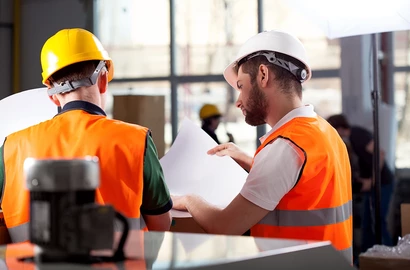Graduate engineer, Nick Swinerd, joined the business in the summer of 2021 six months after his graduation. We spoke to Nick about life as a graduate engineer, why he was drawn to the infrastructure sector and how the skills he acquired at university apply to his role.

What does a typical day as a graduate engineer look like? What are your day-to-day responsibilities?
A typical day as a graduate engineer usually involves starting my morning in the office. I’ll begin my day with a coffee before catching up with colleagues, undertaking office admin such as shift reports from my previous working day and checking in with clients to see if they require anything different to what has been previously asked of me.
Afterwards, I head down to site to start on the tasks at hand. This involves ensuring that all instrumentation is up and running so that the client can see the data on our online monitoring service, Calyx. Problem solving is required for this task, as no two situations are the same.
Another one of my main tasks is to extend the instrumentation. As the ground height on my site is being raised due to mass backfilling, the instrumentation must also be raised. Liaising with the production team on site, I organise when and where the extensions are needed so that I keep to a well-organised plan.
Lastly, client meetings are an important part of my day. Within these meetings, I offer the current status of instrumentation and the overall situation on site. Organisation, commitment and social responsibility are the main responsibilities required to complete my day-to-day tasks.
How does your role fit in with the wider team/broader project delivery?
Being a graduate engineer, I am exposed to lots of new experiences. Offering my help wherever possible has enhanced the amount of new experiences, and I am now able to help my team deliver on projects across a range of sites. I have had the opportunity to work within different departments of the company such as ground surveying, and I have also worked in different locations such as in fields, quarries and tunnels.
What made you want to pursue a career in the monitoring industry/with SOCOTEC Monitoring?
I wanted to start my career in the monitoring industry due to the diversity that the job offers – physically and technically, the job challenges you. I enjoy the mixture of on-site physical work and the technical, behind-the-scenes office work of each job. This in itself changes from project to project, keeping every day new and exciting.
What did you study at university and how do the knowledge/skills you have acquired through your degree apply within your current role?
I studied Mechanical Engineering at university, and my degree has provided me with a diverse and transferable skillset, equipped with general technical engineering skills and analysis. It has helped me many times during my time working at SOCOTEC, allowing me to understand the fundamentals of how each sensor functions and how these sensors can be applied to meet the needs of clients.
What sorts of projects/sites have you worked on?
Currently I am working as part of a team on HS2 section C1. HS2 is currently the largest infrastructure project in Europe, and C1 is part of the central section of the trainline, which will incorporate a 3.4 km viaduct (the largest railway bridge in the UK) and a 16 km twin-bored tunnel.
What do you enjoy the most about working at SOCOTEC Monitoring?
I enjoy the mixture of on-site physical work and the technical, behind-the-scenes office work of each job. This tends to change from project to project, keeping every day new and exciting. Geotechnical and structural monitoring is a niche profession which is expanding very rapidly, so it is an exciting time to be a part of a close-knit team with numerous opportunities.
Do you have any advice for anyone interested in pursuing a career with SOCOTEC Monitoring/in the monitoring industry as a whole?
Be open to any help offered, as experienced knowledge will make your life much easier. You should also be prepared to learn in a fast-moving environment.

You might also like





Add new comment